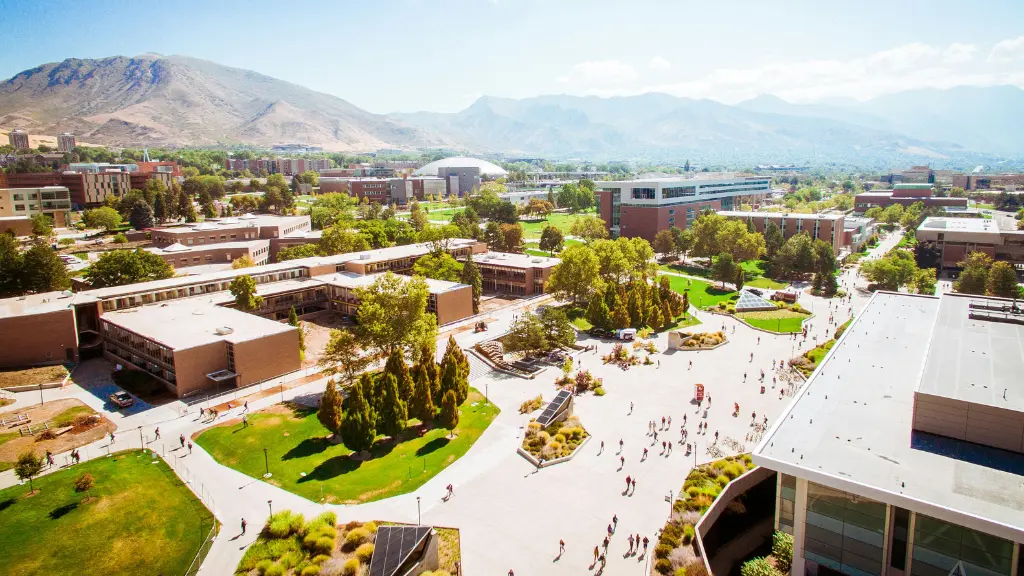

As a graduate student, I was always on the lookout for funding opportunities that could help support my research and further my academic career. One program that stood out to me was the National Science Foundation Graduate Research Fellowship Program (NSF GRFP). This highly competitive program provides financial support to graduate students pursuing research in science, technology, engineering, and mathematics (STEM) fields.
The NSF GRFP is a prestigious program that offers three years of financial support, including an annual stipend and tuition allowance, to graduate students who have demonstrated potential for significant research achievements. The program is open to U.S. Individuals who are citizens, nationals, or permanent residents engaged in research-focused master’s or doctoral programs in STEM disciplines at accredited institutions in the United States. The program also provides opportunities for professional development and networking with other NSF GRFP fellows.
If you’re a graduate student in a STEM field and looking for funding opportunities, the NSF GRFP is definitely worth considering. Not only does it provide financial support, but it also offers valuable resources and networking opportunities that can help you succeed in your academic and professional pursuits.

To be eligible for the nsf grfp Graduate Research Fellowship, I must be a US citizen, national, or permanent resident who is enrolled in or planning to enroll in a research-based A postgraduate program in a qualifying area of study. The eligible fields of study include science, technology, engineering, and mathematics (STEM) fields, as well as social sciences, psychology, and STEM education.
Additionally, I must have completed my undergraduate degree or be in my final year of undergraduate study at the time of the application. Those who have completed their undergraduate degree must have received it within the past 3 years.
In addition to the educational requirements, I must also have research experience to be eligible for the nsf grfp Graduate Research Fellowship. This includes any research projects I have conducted as part of my undergraduate studies, as well as any independent research I have conducted outside of the classroom.
It is important to note that while research experience is not required for eligibility, it is highly recommended. This is because the nsf grfp Graduate Research Fellowship is a highly competitive program, and having research experience can increase my chances of being selected as a recipient.
Overall, to be eligible for the nsf grfp Graduate Research Fellowship, I must meet the educational requirements and have research experience. By meeting these criteria, I can apply for this prestigious fellowship and have the opportunity to further my education and research in my chosen field.

As an applicant for the nsf grfp Graduate Research Fellowship Program (GRFP), I understand that the application process can be daunting. However, with careful planning and attention to detail, the process can be manageable and successful.
It is important to note that the GRFP application has two deadlines: one for the application itself and one for the reference letters. The application deadline typically falls in late October, while the reference letter deadline is typically in early November. It is crucial to adhere to these deadlines, as late submissions will not be accepted.
The GRFP application requires several documents, including a research proposal, personal statement, transcripts, and three reference letters. It is important to carefully review the application instructions to ensure that all required documents are included and formatted correctly.
The GRFP application must be submitted electronically through the nsf grfp FastLane system. It is recommended to start the application early to allow ample time to familiarize oneself with the system and troubleshoot any issues that may arise. It is also important to note that the system may experience high traffic and slow processing times closer to the deadline, so it is best to submit well before the final deadline.
In conclusion, the application process for the nsf grfp Graduate Research Fellowship Program may seem overwhelming, but with careful planning and attention to detail, it can be a successful experience. By adhering to the deadlines, ensuring all required documents are included and properly formatted, and submitting the application early, applicants can increase their chances of receiving the fellowship.

As a former recipient of the Graduate Research Fellowship Program (GRFP), I understand the importance of the selection criteria in determining who receives the award. The GRFP selection criteria are based on two key factors: Intellectual Merit and Broader Impacts.
The Intellectual Merit criterion evaluates the potential of the proposed research project to advance knowledge in the field. This criterion considers the following factors:
Applicants must demonstrate that their research proposal is innovative and has the potential to advance knowledge in their field. They should also provide evidence of their academic achievements, such as publications, presentations, and awards.
The Broader Impacts criterion evaluates the potential of the proposed research project to benefit society. This criterion considers the following factors:
Applicants must demonstrate that their research has the potential to make a positive impact on society and that they have a plan for disseminating their research findings to a broader audience.
In conclusion, the selection criteria for the GRFP are rigorous and comprehensive. Applicants must demonstrate both Intellectual Merit and Broader Impacts in their research proposals to be considered for the award. As a former recipient, I can attest to the significance of the award in advancing my research career.

As an nsf grfp Graduate Research Fellowship Program (GRFP) recipient, I will receive a stipend of $34,000 annually for three years. The stipend is intended to support my living expenses and allow me to focus on my research without the need for additional employment. In addition, I will also receive a $12,000 cost-of-education allowance, which will be paid to my institution to cover tuition and fees.
The NSF GRFP also provides opportunities for professional development. I will have access to a variety of resources, including workshops, seminars, and networking events, which will help me develop my skills and broaden my knowledge. I will also have the opportunity to participate in international research collaborations and gain valuable experience working with researchers from other countries.
Overall, the financial support and professional development opportunities provided by the NSF GRFP will be invaluable as I pursue my research goals. I am confident that this program will help me achieve my full potential as a researcher and contribute to the advancement of my field.

As an NSF GRFP applicant, the research proposal is a crucial component of your application. It is important to keep in mind that the reviewers will be evaluating your proposal based on its intellectual merit and broader impacts. Here are several suggestions to assist you in crafting an effective research proposal:
Letters of recommendation provide valuable insight into your academic and research abilities. It is important to choose recommenders who know you well and can speak to your potential as a researcher. Here are some tips to help you obtain effective letters of recommendation:
By following these tips, you can increase your chances of submitting a strong NSF GRFP application. Good luck with your GRFP 2022 application!

As an NSF GRFP applicant, I am aware that the review process is a crucial part of the application. The review process starts with a panel review, where each application is assigned to a panel of experts in the applicant’s field. The panelists are responsible for evaluating the applications based on the merit review criteria.
During the panel review, the panelists evaluate the applications based on the applicant’s intellectual merit and broader impacts. The panelists assess the applicant’s potential to become a successful scientist or engineer and their ability to contribute to society.
The merit review criteria are the standards that the panelists use to evaluate the applications. The primary criteria are intellectual merit and broader impacts.
The intellectual merit criterion evaluates the potential of the applicant to advance knowledge in their field. The panelists assess the applicant’s academic record, research experience, and their proposed research plan.
The broader impacts criterion evaluates the potential of the applicant to contribute to society. The panelists assess the applicant’s ability to communicate their research to the public, their potential to teach and mentor, and their potential to engage in outreach activities.
The panelists use a scale of excellent, very good, good, fair, or poor to rate the applications based on the merit review criteria. The panelists then recommend the top applicants for further review by the nsf grfp program officers.
Overall, the review process is a rigorous and competitive process. However, as an nsf grfp applicant, I am confident in my ability to meet the merit review criteria and contribute to society through my research.

As a recipient of the National Science Foundation Graduate Research Fellowship, I understand that there are certain post-award expectations that I must adhere to. These expectations include reporting requirements and research compliance.
I am required to submit an annual report to the National Science Foundation Graduate Research Fellowship program outlining my progress towards my research goals. This report should include any publications, presentations, or other research-related activities that I have completed during the past year. Additionally, I must notify the program of any changes to my research plan, including changes to my research topic or advisor.
As a recipient of the National Science Foundation Graduate Research Fellowship, I am expected to conduct my research in compliance with all applicable laws and regulations. This includes compliance with human subjects research regulations, animal care and use regulations, and biosafety regulations. I must also comply with any institutional policies related to research conduct.
In order to ensure that I am in compliance with these regulations, I will work closely with my research advisor and the appropriate institutional committees to obtain all necessary approvals and permissions. I will also keep detailed records of my research activities and ensure that any necessary reporting is completed in a timely manner.
Overall, I am confident in my ability to meet these post-award expectations and look forward to continuing my research with the support of the nsf grfp Fellowship program.
As someone who has gone through the NSF GRFP application process, I have compiled a list of frequently asked questions to help guide you through the process.
The NSF Graduate Research Fellowship Program (GRFP) is a highly competitive fellowship program that provides three years of financial support to outstanding graduate students pursuing research-based Master’s and doctoral degrees In the fields of science, technology, engineering, and mathematics (STEM).
To be eligible for the NSF GRFP, you must be a U.S. citizen, U.S. national, or permanent resident, and you must be pursuing or planning to pursue a research-based Master’s or doctoral degree in a STEM field at an accredited U.S. institution.
The application deadline for the NSF GRFP varies depending on your field of study, but it typically falls in late October or early November. Be sure to check the NSF GRFP website for the most up-to-date information on application deadlines.
The NSF GRFP selection criteria are based on two main factors: intellectual merit and broader impacts. Intellectual merit refers to the potential of the applicant to advance knowledge in their field of study, while broader impacts refer to the potential of the applicant to contribute to the advancement of science and society in general.
To improve your chances of receiving the NSF GRFP, it is important to have a strong research proposal, a clear and concise personal statement, and strong letters of recommendation. It is also important to demonstrate a commitment to advancing science and society through your research.

If you receive the NSF GRFP, you will receive three years of financial support, including a stipend of $34,000 per year and a cost-of-education allowance of $12,000 per year. You will also be able to participate in professional development opportunities and attend networking events. See more articles like this by clicking here: Earth Core: Understanding the Innermost Layer of Our Planet.